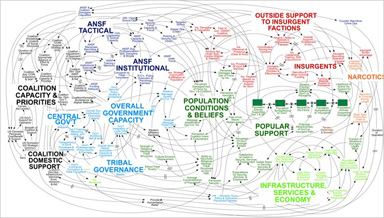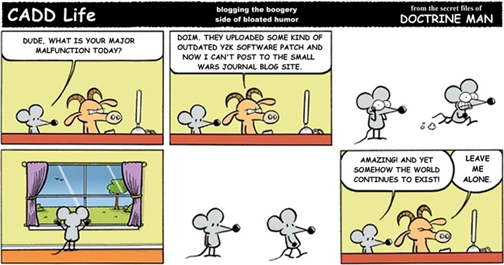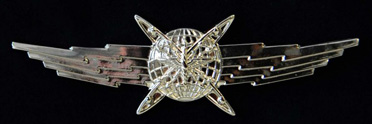Gates: Sea Services Must Question Embedded ThinkingBy Jim Garamone
American Forces Press Service
NATIONAL HARBOR, Md., May 3, 2010 -- The Navy and Marine Corps are going to have to question some embedded thinking, such as whether the Navy needs 11 carrier battle groups or whether the Marines ever will launch another amphibious landing, Defense Secretary Robert M. Gates said here today.
Gates spoke at the Navy League's annual Sea-Air-Space Convention at the Gaylord National Convention Center.
The world is changing, and the sea services must be on the leading edges of those changes, Gates said to an auditorium full of Navy and Marine Corps officers and defense contractors that was just a bit smaller than an aircraft carrier's hangar deck.
Gates made a case for examining the bedrocks of naval strategy, noting that carrier battle groups have been the Navy's main fleet formation since 1942.
"Our current plan is to have eleven carrier strike groups through 2040," Gates said. But a look at the facts is warranted, he added. The United States now has 11 large, nuclear-powered carriers, and there is nothing comparable anywhere else in the world.
"The U.S. Navy has 10 large-deck amphibious ships that can operate as sea bases for helicopters and vertical-takeoff jets," he said. "No other navy has more than three, and all of those navies belong to allies or friends."
The U.S. Navy can carry twice as many aircraft at sea as the rest of the world combined, Gates said. Under the sea, he told the group, the United States has 57 nuclear-powered attack and cruise-missile submarines -- more than the rest of the world combined, and 79 Aegis-equipped surface ships that carry about 8,000 vertical-launch missile cells.
"In terms of total-missile firepower, the U.S. arguably outmatches the next 20 largest navies," Gates said. "All told, the displacement of the U.S. battle fleet -- a proxy for overall fleet capabilities -- exceeds, by one recent estimate, at least the next 13 navies combined, of which 11 are our allies or partners."
The United States must be able to project power overseas, Gates said. "But, consider the massive overmatch the U.S. already enjoys," he added. "Consider, too, the growing anti-ship capabilities of adversaries. Do we really need 11 carrier strike groups for another 30 years when no other country has more than one?"
The Marine Corps is now 202,000 strong. It is the largest force of its type in the world, and exceeds in size most nations' armies. Between the world wars, the Marine Corps developed amphibious warfare doctrine and used it to great effect against the Japanese during World War II. Whether that capability still is needed, however, is worthy of thought, the secretary said.
"We have to take a hard look at where it would be necessary or sensible to launch another major amphibious landing again -- especially as advances in anti-ship systems keep pushing the potential launch point further from shore," Gates said. "On a more basic level, in the 21st century, what kind of amphibious capability do we really need to deal with the most likely scenarios, and then how much?"
The sea services must be designed to meet new challenges, new technologies and new missions, Gates said.
Nations and terror groups are not going to challenge the conventional might of the United States, he noted. Rather, they are working on asymmetric ways to thwart the reach and striking power of the U.S. battle fleet.
"At the low end, Hezbollah, a non-state actor, used anti-ship missiles against the Israeli navy in 2006," Gates said. "And Iran is combining ballistic and cruise missiles, anti-ship missiles, mines, and swarming speedboats in order to challenge our naval power in that region."
A bit farther up the scale, the virtual monopoly the United States has had with precision-guided weapons is eroding, the secretary said, especially with long-range, accurate anti-ship cruise and ballistic missiles that can potentially strike from over the horizon.
"This is a particular concern with aircraft carriers and other large, multi-billion-dollar blue-water surface combatants, where, for example, a Ford-class carrier plus its full complement of the latest aircraft would represent potentially $15 billion to $20 billion worth of hardware at risk," Gates said. "The U.S. will also face increasingly sophisticated underwater combat systems -- including numbers of stealthy subs -- all of which could end the operational sanctuary our Navy has enjoyed in the Western Pacific for the better part of six decades."
The sea services already are addressing many of the challenges of the 21st century, the secretary said. The Navy, for example, is building partnership capacity through the Africa Partnership Station in the Gulf of Guinea. Sailors are training with friends and allies to secure vital shipping lanes in Southeast Asia. Seabees and other sailors are digging wells and building schools in Djibouti. Naval officers lead the multinational efforts to counter the piracy around the Horn of Africa. Naval doctors, nurses and corpsmen that treated those injured in the Haitian earthquake and sailors also are helping with crises like the oil spill in the Gulf of Mexico, Gates said.
"Then, there are the wars," he said. "With roughly 25 ships -- and more than 20,000 sailors -- in the [U.S. Central Command] area of operations, there is no doubt that this is a Navy at war."
Tens of thousands of sailors also have served on the ground alongside soldiers and Marines. The sailors serve on provincial reconstruction teams, as finance clerks, on riverine crews, as Seabees, as SEALs and as medical corpsmen. "These men and women are vital to the mission and helping to ease the strain on our ground forces -- and doing so without fail and without complaint," Gates said.
The secretary said the Marines have been "game-changers" in Iraq, and now in Afghanistan. "In March, I had a chance to meet with Marines at the tip of the spear in a town called Now Zad -- a place that had been, for nearly four years, a ghost town under the jackboot of the Taliban," Gates said. "Then came a battalion of Marines, who, after months of hard work and sacrifice, have slowly brought the town back to life -- creating a model for operations elsewhere."
The military needs more innovative strategies and joint approaches, the secretary said. He called the agreement by the Navy and Air Force to develop an Air-Sea Battle Concept encouraging. It has "the potential to do for America's military deterrent power at the beginning of the 21st century what Air-Land Battle did near the end of the 20th," he said.
But the military also must shift investments toward systems that provide the ability to see and strike deep along the full spectrum of conflict, Gates said.
"This means, among other things, extending the range at which U.S. naval forces can fight, refuel, and strike, with more resources devoted to long-range unmanned aircraft and intelligence, surveillance, and reconnaissance capabilities," he explained.
It also means new sea-based missile defenses and a submarine force with expanded roles that is prepared to conduct more missions deep inside an enemy's battle network. "We will also have to increase submarine strike capability and look at smaller and unmanned underwater platforms," Gates said.
The secretary acknowledged talk that his push to rebalance the force to provide more resources to fight today's wars has gone too far.
"In reality," he said, "in this fiscal year, the Department of Defense requested nearly $190 billion for total procurement, research, and development -- an almost 90 percent increase over the last decade. At most, 10 percent of that $190 billion is dedicated exclusively to equipment optimized for counterinsurgency, security assistance, humanitarian operations or other so-called low-end capabilities.
"In these last two budget cycles," Gates continued, "I have directed a needed and noticeable shift -- but hardly a dramatic one, especially in light of the significant naval overmatch."
Resource discussions always foster debates about gaps in military capabilities, Gates said, and the solution usually offered is "either more of what we already have or modernized versions of pre-existing capabilities."
"This approach ignores the fact that we face diverse adversaries with finite resources that consequently force them to come at the U.S. in unconventional and innovative ways," he continued. "The more relevant gap we risk creating is one between the capabilities we are pursuing and those that are actually needed in the real world of tomorrow."
Gates said the sea services must remember that as the wars draw down, money will be required to reset the Army and Marine Corps -- the services that have borne the brunt of the conflicts in Iraq and Afghanistan.
"And there will continue to be long-term -- and inviolable -- costs associated with taking care of our troops and their families," he said. "In other words, I do not foresee any significant top-line increases in the shipbuilding budget beyond current assumptions. At the end of the day, we have to ask whether the nation can really afford a Navy that relies on $3 [billion] to $6 billion destroyers, $7 billion submarines, and $11 billion carriers."



